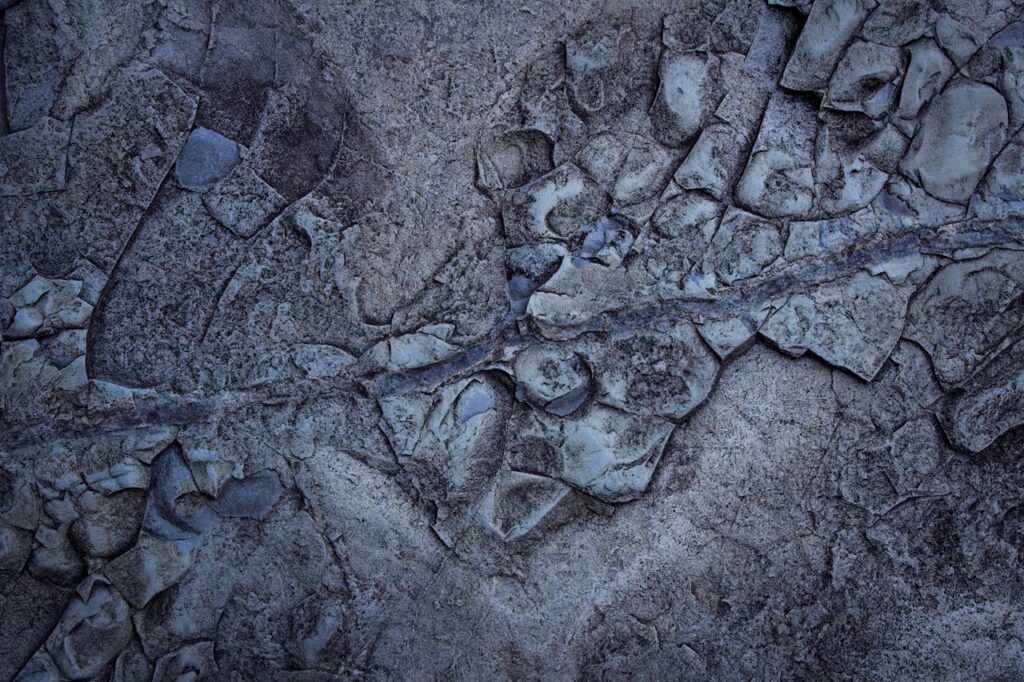
Explore & Play
Discover interesting topics and solve the accompanying crossword puzzle.
Rock Crossword | Cultural Significance of Stones
Table of Contents
Start by challenging yourself with the Rock crossword at the beginning of this post, where you can test your knowledge of rocks and their cultural significance. If you’re not yet familiar with the topic, feel free to dive into the article first to gather some insights, and then return to the crossword to apply what you’ve learned. Whether you choose to begin with the crossword or the article, you’re in for an engaging exploration of the fascinating role rocks have played throughout history.
Rock Crossword
You can either fill in the crossword puzzle directly on this page or click the button in the bottom right corner to print it for free.

Natural Rock Art: The Cultural Significance of Stones in History
Rocks have shaped human history not only as essential materials for construction and tools but also as symbols of cultural significance across ancient civilizations. From the earliest tools made from flint to the towering monuments crafted from marble, rocks have always been a part of human culture. Whether used in ancient rituals, religious practices, or artistic expression, they have stood the test of time, connecting past generations with the present.
In this article, we will explore the cultural importance of rocks, examining how they have influenced history, art, and religion. Along the way, we will also touch on a crossword puzzle that highlights the different types of rocks that have left their mark on human civilization.
I. The Historical Significance of Rocks in Human Culture
1. Early Use of Rocks in Tools and Weapons
Since the beginning of human existence, rocks have been essential to survival. In the Paleolithic era, humans began using rocks like flint, basalt, and obsidian to create tools and weapons. Flint, for example, was used to make sharp tools and cutting implements, while basalt and obsidian were favored for crafting more durable weapons such as axes and arrowheads. The sharp edges of these rocks made them invaluable in hunting, building, and daily survival.
In fact, early humans were so reliant on rocks that they became the first “technology” of the time. Today, these early tools can still be found in archaeological sites, offering a glimpse into the ingenuity of our ancestors and the importance of rocks in shaping human history.
2. Rocks in Architecture and Monuments
As civilization progressed, the use of rocks expanded beyond tools and weapons to the construction of monumental structures. Ancient cultures chose rocks like granite, limestone, and marble for their durability and aesthetic appeal. The Egyptians, for example, used granite to build their massive pyramids, while the Greeks and Romans favored marble to create their temples and sculptures. These stones symbolized permanence and strength, aligning with the values of ancient societies.
The use of limestone in the construction of the Great Pyramid of Giza, as well as the use of marble in the Parthenon, is a testament to how rocks were not only building materials but also symbols of power, culture, and religion. These architectural marvels continue to inspire awe today, showcasing the timeless connection between rocks and human culture.
II. Rock Art: Early Forms of Expression
1. Petroglyphs and Cave Paintings
Long before the advent of written language, humans expressed themselves through rock art. Petroglyphs, or carved images on rocks, have been found in caves and rock formations around the world. Stones like slate, sandstone, and chalk were often used for their smooth surfaces, making them ideal for engraving. In the caves of Lascaux in France, early humans used chalk to create vivid images of animals and hunting scenes, providing us with insight into their lives and beliefs.
These early forms of expression were not only artistic but also had spiritual and ritualistic significance. Many rock art sites are believed to have been used in religious ceremonies, where the rocks themselves held sacred meaning. As such, rock art has remained an important cultural legacy that connects us to ancient human civilizations.
2. The Role of Natural Formations in Religious Practices
In many ancient cultures, natural rock formations held deep religious or spiritual meaning. Cairns, which are man-made piles of stones, have been used for millennia as markers or as symbols in spiritual practices. Cultures across the globe, from the Celts in Europe to indigenous groups in North America, constructed cairns using rocks such as tuff and limestone to honor their deities or mark important sites. These rock formations, often placed on hilltops or near sacred spaces, were seen as powerful symbols of connection between the physical and spiritual realms.
Rocks were not just artistic tools; they were believed to embody the forces of nature. For example, in ancient Egypt, sandstone and granite were used in the construction of temples and monuments dedicated to gods, symbolizing their eternal presence. Such use of rocks reinforced their significance in the daily lives of ancient peoples, from their physical utility to their spiritual power.
III. Rocks in Mythology and Spiritual Beliefs
1. Sacred Stones and Their Symbolic Meaning
Rocks have long been revered for their supposed mystical properties, inspiring numerous myths, legends, and religious beliefs. Across many ancient cultures, stones such as jasper, hematite, and turquoise were seen as sacred and were believed to hold protective or healing powers. For instance, jasper was thought to bring good fortune, while hematite was used in ancient times as a symbol of strength and protection.
In Native American traditions, stones like turquoise were not only used for jewelry but also for spiritual rituals. These rocks were believed to connect the wearer with the earth and its natural energies. The symbolism of stones, with their permanence and strength, continues to play an important role in many modern cultures today, illustrating the enduring power of rocks in shaping human beliefs.
2. Stone Circles and Monolithic Structures
The role of rocks in spiritual beliefs is perhaps most famously seen in megalithic structures like Stonehenge in England and the statues of Easter Island. These structures, made from massive stones such as granite, sandstone, and basalt, were not only architectural marvels but also held immense cultural and religious significance. Stonehenge, for example, is believed to have been used for astronomical observations and rituals, aligning the stones with celestial bodies and marking important events such as solstices.
These megaliths reflect the cultural importance of rocks in ancient societies, serving as both physical and symbolic markers of the passage of time and human understanding of the universe. Whether used to honor the gods, mark sacred events, or connect with the cosmos, these stone structures demonstrate the deep reverence for rocks throughout human history.
IV. The Evolution of Stone Carving and Sculpture
1. Early Stone Carving Techniques
Over time, the use of rocks expanded from simple tools to complex artistic expressions. Early stone carving techniques involved the use of rocks like flint and obsidian to create functional items, but as civilization progressed, these same materials were used to craft intricate sculptures and art pieces. In ancient Egypt, for instance, basalt was often used for carving statues of pharaohs, while the Greeks and Romans preferred marble for creating their famous sculptures, such as Michelangelo’s David.
These early carvings were not just artistic expressions but were often symbolic representations of gods, rulers, and powerful figures. The ability to carve such precise and detailed figures out of solid stone was a remarkable feat of craftsmanship and an essential part of the cultural legacy that rocks left behind.
2. Iconic Stone Sculptures Across Cultures
Some of the most famous sculptures in history are made from rocks such as marble, limestone, and sandstone. One of the most iconic examples is Michelangelo’s David, a masterpiece carved from marble that represents the ideal of human beauty and strength. The use of marble in sculpture has continued throughout history, from ancient Greece to the Renaissance, demonstrating the timeless appeal of this material.
In addition to these well-known examples, there are countless sculptures created from various types of stone, each with its own cultural significance. Whether it’s the statues of Easter Island made from basalt, or the intricate carvings in the temples of Cambodia made from sandstone, these stone sculptures serve as lasting testaments to the artistry and skill of ancient cultures.
V. The Role of Rocks in Modern Art and Architecture
1. Natural Stones in Contemporary Architecture
Rocks continue to play a crucial role in modern architecture. Stones like granite, limestone, and slate are used in buildings, monuments, and sculptures to create lasting structures that blend functionality with beauty. Modern skyscrapers, public monuments, and civic buildings often use granite for their durability and timeless appearance.
In addition, slate and limestone are popular choices for flooring and decorative elements, while marble remains a favorite for high-end finishes. These materials have not only endured through the ages but have adapted to modern tastes and needs, showing that the cultural importance of rocks is far from fading.
2. Stone as a Medium in Modern Sculpture
Even in contemporary art, stone continues to be a preferred medium for many sculptors. Artists today still use marble, stone, and sandstone to create sculptures that evoke the same timeless appeal as ancient works. These modern sculptures often draw inspiration from the classical pieces of the past, reinterpreting them for a new generation.
The enduring nature of stone, combined with its versatility, ensures that it remains a powerful medium in the hands of artists. Whether used in public art installations or private collections, rocks continue to inspire creativity and shape modern culture.
VI. The Geological and Cultural Connection Between Rocks and Human History
1. The Formation of Rocks and Their Role in Human History
Rocks are not just important because of their uses—they also tell the story of Earth’s geological history. Rocks like shale, slate, and gypsum are created over millions of years, forming through processes such as compression, heat, and pressure. The history of these rocks is intertwined with the history of the Earth itself, providing insights into the planet’s past environments and ecosystems.
As humans have evolved, our relationship with rocks has similarly deepened. We have learned to harness their natural properties to build civilizations, create art, and shape our environments. The geology of rocks and the cultures that use them are connected in profound ways, creating a lasting legacy that spans time and space.
Conclusion: The Everlasting Bond Between Rocks and Human Civilization
From the first tools created in the Stone Age to the majestic temples and sculptures of ancient civilizations, rocks have played an indispensable role in shaping human history and culture. Their use as building materials, sacred symbols, and artistic mediums highlights their enduring significance throughout the ages. Even today, rocks continue to influence modern architecture, sculpture, and design, proving that the bond between humans and stones remains as strong as ever.
As you explore the wonders of rocks in human history, take a moment to play the crossword puzzle linked above, where you can test your knowledge of different types of rocks and their impact on civilization. Dive deeper into the fascinating world of stones and uncover more about their cultural significance.
Share to...
I hope you enjoy the content.
Want to receive our daily crossword puzzle or article? Subscribe!
You may also be interested in
Share to…
Want to receive our daily crossword puzzle?
-
Jigsaw Puzzles
Rose-Tinted Dreams Floral Puzzle 250 | 300 | 500 Pieces
kr 348,00 – kr 439,00Price range: kr 348,00 through kr 439,00 Select options This product has multiple variants. The options may be chosen on the product page -
Jigsaw Puzzles
Norwegian Stave Church Abstract Jigsaw Puzzle 250 | 300 | 500 Pieces
kr 348,00 – kr 439,00Price range: kr 348,00 through kr 439,00 Select options This product has multiple variants. The options may be chosen on the product page -
Jigsaw Puzzles
Lofoten Serenity: Abstract Puzzle 250 | 300 | 500 Pieces
kr 348,00 – kr 439,00Price range: kr 348,00 through kr 439,00 Select options This product has multiple variants. The options may be chosen on the product page

















